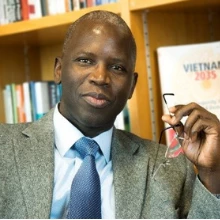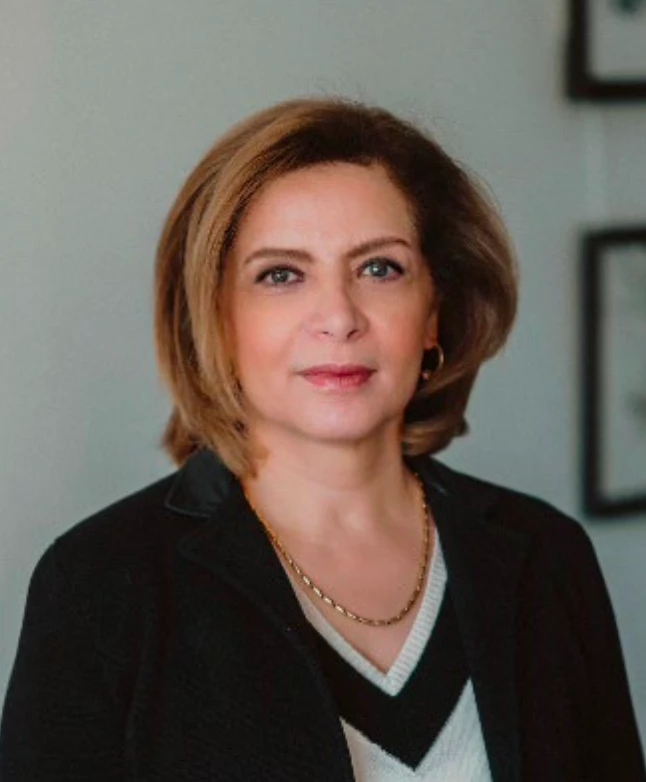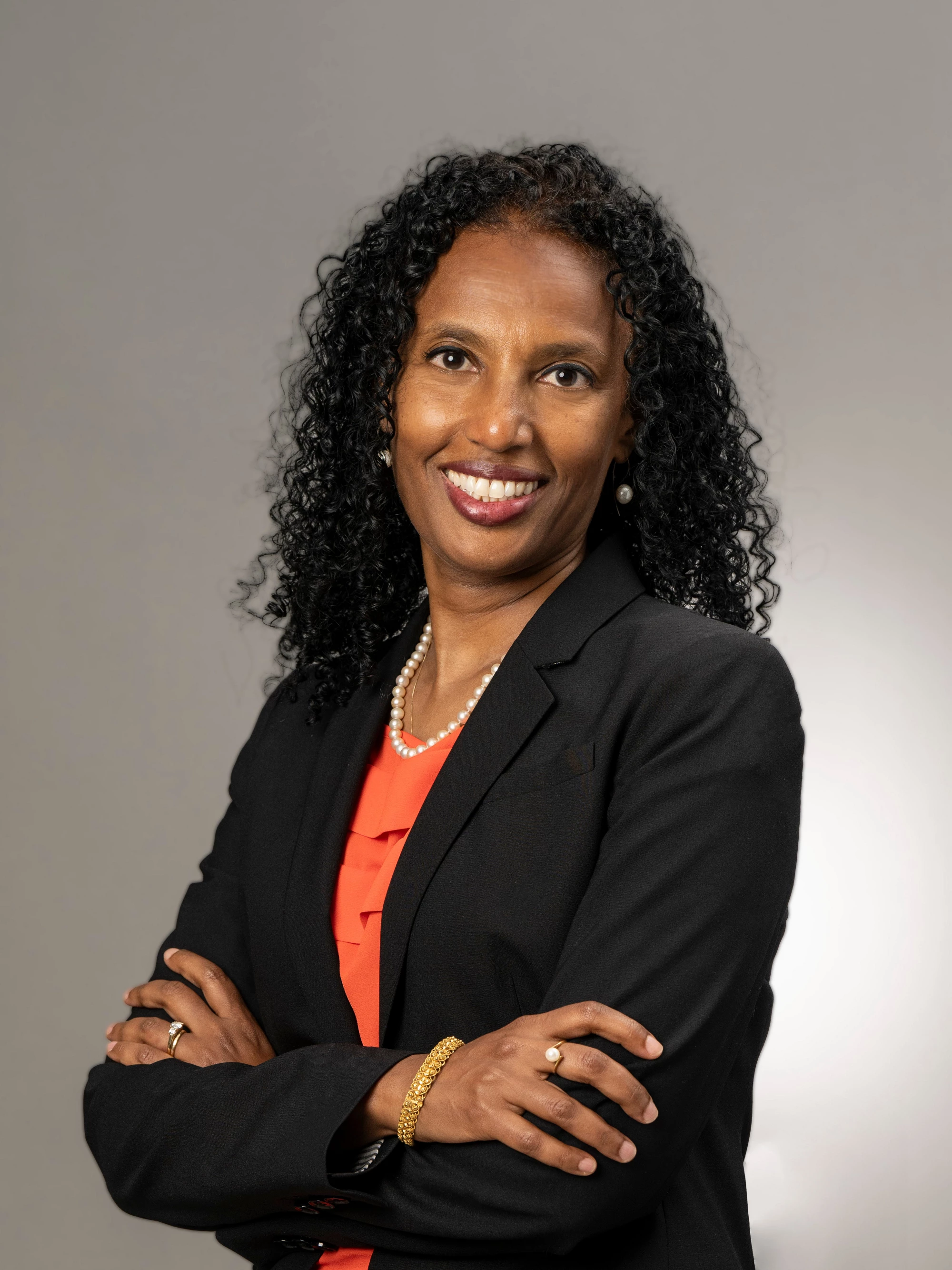 Young woman standing with laptop. (Shutterstock/Gorodenkoff)
Young woman standing with laptop. (Shutterstock/Gorodenkoff)
Every International Women’s Day, we at the World Bank reflect on the progress and advancements women are making across the Middle East and North Africa (MENA) region.
We know the facts. Women have one more year of school-adjusted learning than men, and they are getting higher degrees (43% of women vs 39% of men enrolled in tertiary education), on average. Still, they still face barriers that makes entering and staying in the labor market a challenge. These barriers include access to affordable and safe childcare, access to affordable and safe transportation, which limits their mobility and opportunities, and unequal pay. There are also legal restrictions and social norms affecting women’s choices and ability to work outside the home, as well as gender-based violence that continues to affect their lives. As a result, MENA holds the world’s lowest female labor force participation rate at 19% compared to a global average of 48%.
Despite these obstacles, we are seeing some great progress across the region. In countries like Jordan, which has made significant strides in implementing reforms to enhance women’s participation in the workforce, including improving access to finance, promoting entrepreneurship, and addressing social norms. Through the most recent Country Partnership Framework and the Enhancing Women’s Economic Opportunities operation, the Bank is supporting the bold objective of Jordan’s Vision for Economic Modernization to double the country’s female labor force participation rate from 14 to 28% by 2033.
For another example, we can look to Saudi Arabia, where the country undertook reforms that removed barriers and made an environment more favorable for women to enter the workforce. In a matter of years, the female labor force participation rate increased from 22 to 35%, exceeding the target set by the Kingdom. In Egypt, the Bank has supported the government’s work to help women access housing subsidies and establish eligibility criteria for ownership and rental subsidies that prioritize women-headed households, increasing the female share of housing owners to 20%. And in Morocco and Tunisia, the Bank has supported access to private equity for hundreds of women-led startups and small and medium enterprises, as well as provide business skills training.
Beyond operational support and technical advice, we are also helping to facilitate knowledge exchange and learning. In the United Arab Emirates, the Bank helped launch a Gender Center for Excellence, which will help address gender issues through research and knowledge exchange. And in June 2022, we launched the Regional Network in Energy for Women, supported by the Energy Sector Management Assistance Program, to boost women’s participation in the energy sector.
We applaud the work of the countries in our region. And we know that more can be done. In fact, recent World Bank research indicates that closing gender employment gaps would result in a remarkable 51% increase in per capita income in the typical MENA country. This is why we believe that if given equal opportunities, women can be the driving force behind economic growth, innovation, and stronger communities. We have come together to develop a new World Bank MENA Regional Gender Action Plan (RGAP 2025-2030) that provides a clear roadmap for empowering women across the region, with the ultimate goal to increase female labor force participation. The action plan focuses on five priority areas that address critical barriers to their inclusion:
- Employment – Expanding job opportunities for women, improving workplace conditions, and implementing policies like parental leave and anti-discrimination laws.
- Entrepreneurship & Assets – Supporting women-led businesses through access to credit, financial literacy programs, and legal reforms that enable women to own property and assets.
- Services – Ensuring inclusive access to education, healthcare, and social protection systems as well as infrastructure (transport, energy, etc.) that cater to the needs of women and girls, and, supporting women’s digital inclusion.
- Care Economy – Expanding quality childcare services to address one of the biggest constraints preventing women from joining (and re-entering) the workforce.
- Gender-Based Violence (GBV) – Strengthening laws and creating safer public spaces, workplaces, and homes for women.
We envision a world where these changes can take hold and deliver real results. Through this action plan, our aim is to support countries as they work to ensure that women can earn fair wages and access leadership opportunities. We want to see entrepreneurship flourishing because financial institutions invest in women-led businesses, and there are mentors guiding aspiring women leaders. We want to see legal reforms protecting women’s rights to property, inheritance, and employment.
But we know we can’t do it alone. It takes a collective effort—governments, businesses, and communities all need to work together to accelerate women’s economic participation. Our Regional Gender Action Plan emphasizes collaboration, encouraging cross-sector collaboration, policy integration, and stronger accountability mechanisms to track progress.
Men have a crucial role to play as allies, supporting women in their workplaces, homes, and society at large. Without shifting societal perceptions, real change will remain out of reach.
This International Women’s Day, we call on everyone to take action to promote inclusivity—to mentor young girls, support women-led businesses, and advocate for policies that dismantle barriers to women’s empowerment. Helping women advance isn’t just about economic success; it is about creating a better future for everyone.
We are determined to work hard across the region to make that future a reality.





Join the Conversation